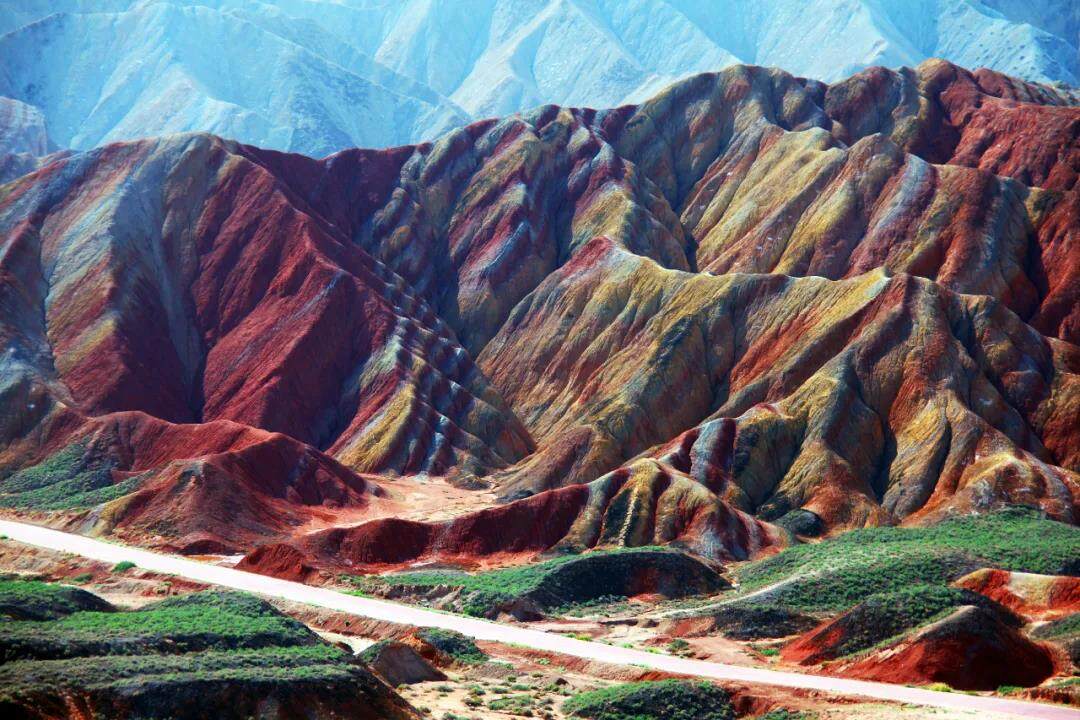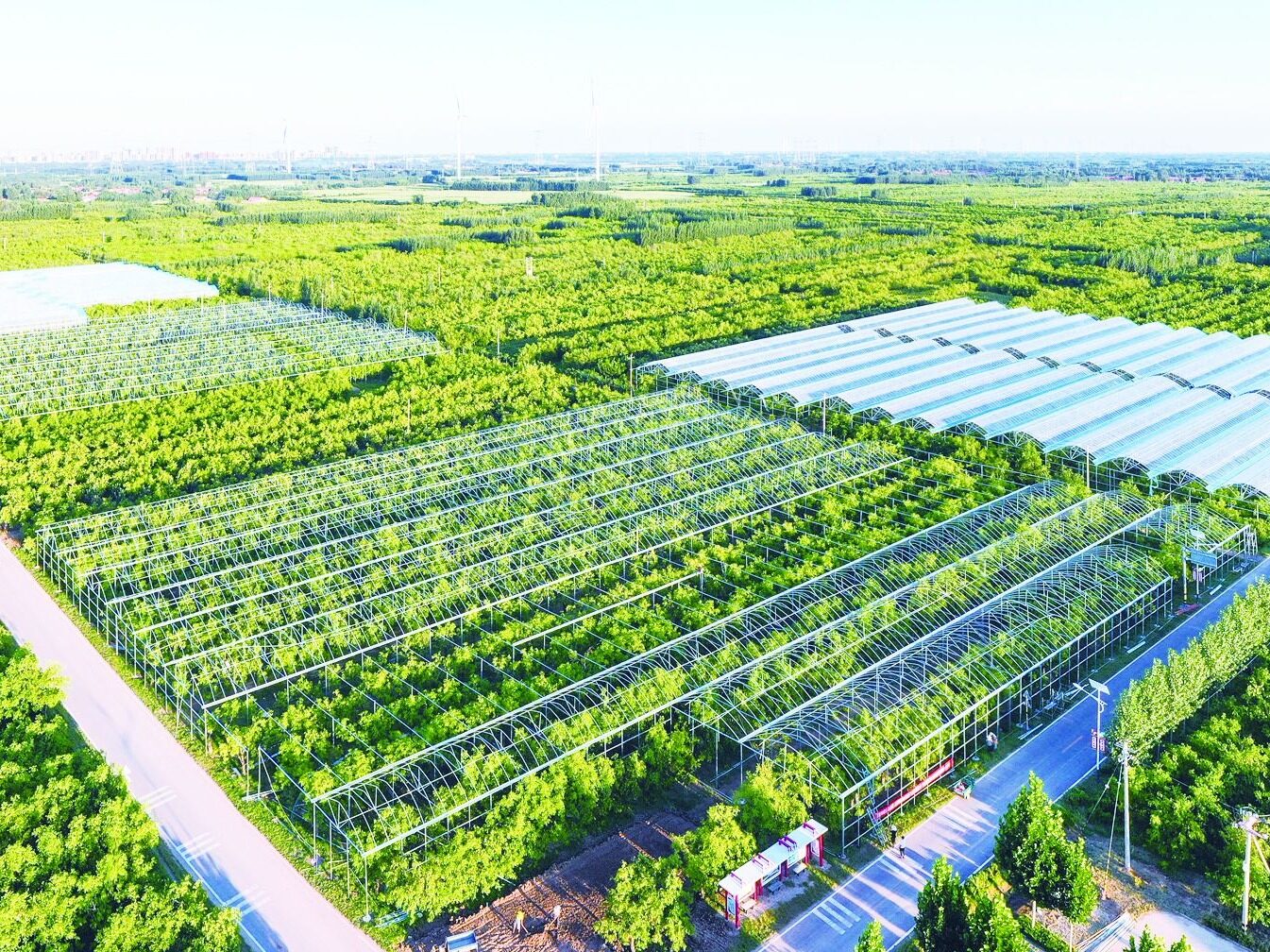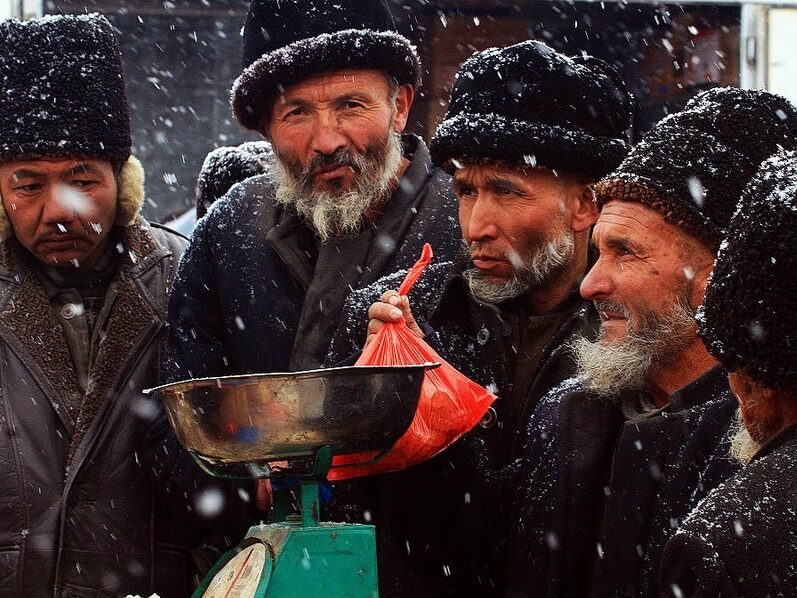- The Hexi Corridor has glaciers, rivers, and sunlight, which prevents the drier Hexi Corridor from being swallowed by drought

The outline of China's Gansu Province is like a double-headed Ruyi, embedded in the northwestern land. In history, both the central government and the various ethnic groups in the west have regarded this land as a treasure like wishful thinking and attached great importance to it. The key to Gansu's strategic position is the Hexi Corridor.

Although it is known as the granary of the Northwest, the Hexi Corridor has a continental arid climate with an annual rainfall of less than 200 mm. Why does it have such a reputation?
East-West Passage
The Yellow River passes through the province from southeast Gansu. The long and narrow part to the west of the Yellow River is clamped by mountains on both sides, forming a natural geographical passage.

The Great Wall draws a rest on the Hexi Corridor. However, as an outstretched arm of the Central Plains, the Hexi Corridor has expanded the vision and footprint of the Chinese nation to the middle and far ends of the Eurasian continent. The army is fighting fiercely here, the business travel is here, the culture is exchanged here...Which one is the main theme of the Hexi Corridor? all these are. It can be said that this is the lifeblood of Gansu.

In the gap between the Inner Mongolia Plateau and the Qinghai-Tibet Plateau, the Hexi Corridor is like a geological kaleidoscope, presenting almost all the topography and landforms on the earth except the ocean. From Lanzhou to the west, crossing the Yellow River, over Wushaoling, enter the Hexi Corridor. For thousands of years, the Hexi Corridor has played an important role and has always been an important geographic channel for communication between east and west.

It is impossible to know who first discovered the Hexi Corridor when it was discovered. It is more likely that ethnic groups from different regions of the East and the West came here one after another while exploring the surrounding counties. Their respective cultures exchanged and merged here, and then spread to distant places. Southern rice and northern wheat are China’s agricultural production patterns that have continued for more than 2,000 years. But who could have imagined that the wheat grown in large areas in the north turned out to be foreign visitors.
The Hexi Corridor is one of the main routes for the introduction of wheat into China. The word "come" in the oracle bone inscriptions is like a mature wheat (a wheat stalk is connected to two ears of wheat). The original meaning is wheat, because wheat came from a field and was later borrowed as a coming.
Another foreigner is smelting technology. The Xichengyi site shows people a smelting workshop more than 4,000 years ago, confirming that the technology of smelting copper had been introduced into the Hexi Corridor at that time, and then continued eastward into the middle reaches of the Yellow River. The Hetian jade produced in Xinjiang was continuously transported to the east via the Hexi Corridor. By the 13th century BC, it had entered the Yin Capital (now Anyang City, Henan Province) and became the most precious court jade in the imperial palaces of successive Chinese emperors. Therefore, the predecessor of the Silk Road was the Jade Road from the Western Regions to the Central Plains.

Gobi, sand dunes, snow-capped peaks, rivers, farmland, pastures, towns, different landscapes appear one after another like revolving lanterns, bringing everyone a visual feast. This rich scenery comes from a magical painter-Qilian Mountain.

Qilian Mountain is also called Corridor South Mountain. It is not only the backer of the Hexi Corridor, but also the curved boundary of the northeastern Qinghai-Tibet Plateau. With the continuous collision of the Indian Ocean plate and the Asia-Europe plate, the Qinghai-Tibet Plateau uplifted and the northeastern edge of the Qinghai-Tibet Plateau deformed. Due to a series of fault activities, the Qilian Mountains rose up. It is not a simple mountain range, but a "alpine labyrinth" composed of a series of branches, each of which has an altitude of four to five kilometers.
The wind blowing from the Pacific Ocean regarded these mountains as the final destination. Qilian Mountain uses the water vapor brought by these winds to create miracles.

Snow becomes ice, glaciers melt into rivers... When the melting water of ice and snow converges to form a river, it will show the power of shaping the earth. The 800-kilometer-long Qilian Mountains in the Shiyang River, the Heihe River in the middle, and the Shule River in the west have three major water systems, and 56 rivers of various sizes stretch on the ground like leaf veins. They carry earth and rocks, create plains, and water the oasis, the island of life on the Gobi.
Overlooking the Hexi Corridor, the Badain Jaran Desert and the Tengger Desert in the north approach the Beishan Corridor with an aura of engulfing everything. However, these two deserts have not become protagonists on the stage of the Hexi Corridor, and the hero is Shiyang River.
It originated from the eastern end of Qilian Mountains, winding northward for hundreds of kilometers, reaching out into the desert yellow sand like tentacles, creating a long and narrow oasis between Badain Jaran and Tengger, stubbornly blocking the two deserts. The closing and the invasion of the south.
Inside the corridor, different water systems have also conquered the site one after another-going deep into the Gobi, irrigating one piece of green base area after another.

The patchy oasis along the corridor is just a stepping stone built by nature for mankind, and it is also a passport issued for civilization. In addition, meteorological data show that in the past 30 years, the temperature in the Hexi Corridor has shown a significant upward trend, with a temperature increase rate of 0.46℃/10 years; the average annual precipitation also shows an increasing trend, with a precipitation increase rate of 6 mm/10 years. There is a trend towards warming and humidification, but this kind of humidification is not obvious.
The Hexi Corridor can reach the Central Plains in the east, the Western Regions in the west, Mongolia in the north and Tibet in the south. It is an important passage of the Silk Road and a place for cultural exchanges between the East and the West.
There are glaciers, rivers, and sunlight here, which prevents the drier Hexi Corridor from being swallowed by drought. Editor/He Yuting
Comment
 Praise
Praise
 Collect
Collect
 Comment
Comment
 Search
Search














Write something~